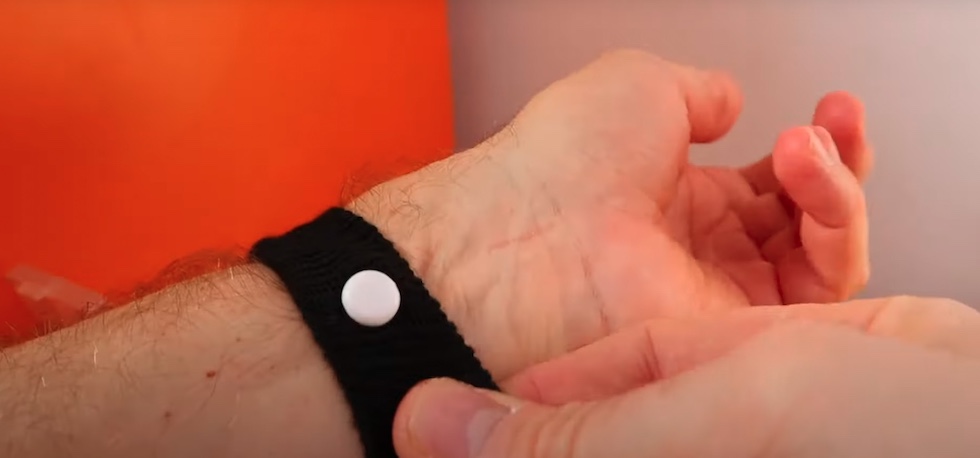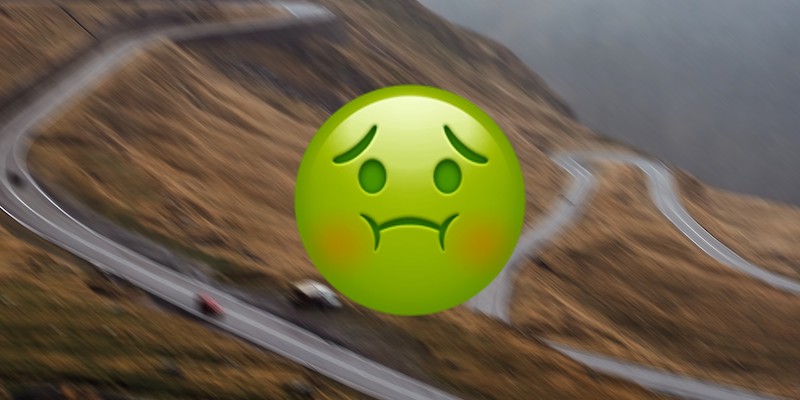Loading player
As summer approaches, the opportunities to make long journeys by car or bus and, for those who suffer from it, to deal with car sickness increase. It is estimated that the problem affects about one third of the population and that even the least prone to ailments such as nausea and headaches suffer – at least once in their life – traveling by means of transport. The mechanisms that cause motion sickness, seasickness and generally the feelings of malaise when traveling are not yet fully known, but there are pretty solid theories as to what the causes may be.
Nausea is nausea
The first human beings experienced motion sickness, that is, travel sickness, as soon as they developed systems to move on waterways and in the sea. The word “nausea” itself is closely related to the term “ship”. In ancient Greece the term used to indicate seasickness came from “ναῦς” (“naus”) that is “ship”. Those who suffered from seasickness used the word “ναυτιάω” (“nautiao”) or “ναυσιάω” (“nausiao”), from which later derived the Latin words “nausea” and “nauseare”, whose meaning already in ancient times it had extended to include general stomach pain, vomiting, disgust for something, and finally boredom.
At the time, motion sickness was almost exclusively associated with navigation, but in the following centuries with the spread of animal-powered transport systems, such as wagons and carriages, the experience of motion sickness became more widespread and began to affect land transport as well. . The introduction of the first shock absorbers on the carriages made it possible to increase speed and shorten travel times, leading however to more frequent episodes of motion sickness. The problem would become even more evident after the introduction of railways in the nineteenth century and in the early twentieth century with the first cars.
Overall, the development of new means of locomotion and transportation has made the world smaller, but at the same time it has become the cause of nausea and malaise for billions of people. Not everyone suffers in the same way from cars, trains, ships, planes and even spaceships, and according to the most accredited theories it all comes from how we are made and from the difficulty for our senses to accept that we are in motion even when we are actually stationary.
Equilibrium
The main suspect for motion sickness is the system that keeps us in balance, which does not depend on a single sensory organ, but on a combination of different information collected from multiple systems and processed by the brain. The most important center of balance is found in the inner ear, and in particular in the vestibular labyrinth, equipped with receptors to perceive the position and movements of the head, essential to allow us to remain stable standing, to maintain a certain posture while sitting or lying down and moving in space.
(Wikimedia Commons)
The information that comes from the vestibular labyrinth is then integrated with that that comes from sight and from various tactile sensations, including those that make us feel a certain pressure (the sensation of “feeling the air on you” when we run or swing on a swing, for example). Our brain constantly processes all this information, making possible not only balance, but the perception itself of occupying the space in which we find ourselves and of doing it in a certain way depending on the circumstances.
In the case of conflicting and contradicting information, the brain struggles to make sense and the result of this difficulty can be motion sickness. And this is exactly what happens when we are on a means of transport.
Car sickness
During a car trip, our eyes and ears pick up normal sensations of motion, even though our body isn’t actually doing something to move: some senses tell the brain that we’re moving, even if we’re still. The conflicting information undermines the normal mechanisms of balance and the more they contradict each other, the greater the nausea and the remaining sense of malaise.
A bumpy mountain road with many curves involves greater stresses and conflicting information for the brain, compared to a highway with a smooth surface and a substantially straight path or in any case with very wide curves. This also explains why people who suffer from motion sickness usually have fewer problems traveling by train: there are no sudden movements, the rail journey is smoother and there is almost always the possibility to get up, move and change. frequently position, at least partially compensating for the sensation of being in motion when stationary.
Horizon
Reading a book or even just peeking at the screen of your smartphone for a few seconds can increase the sense of nausea among those suffering from motion sickness. Staring at something very closely contributes to amplify the discrepancy of information and to increase the sense of discomfort, because the perception of motion when stationary remains almost completely dependent on the balance centers in our ears, excluding the sight that in some cases can mitigate. motion sickness. This is why people with motion sickness are advised to try to fix very distant points on the horizon, which appear to move more slowly and therefore can reduce the sensation of being in motion.
The system usually works, but there may be cases where it is impossible to observe something on the horizon that appears substantially stationary. On the high seas there are no reference points and this partly explains the greater difficulties in overcoming seasickness, combined with the strong stresses deriving from the pitching of the ship due to the motion of the waves. Even on an airplane it is not always possible to establish a point on the horizon, as most of the seats are far from the windows. Except for the stages in which you go through disturbances, a journey by plane is usually less turbulent than one by car and that is why many people who suffer from the car have practically no problems when flying.
In general, the longer and bumpier a trip, the more motion sickness will be felt. A person prone to this type of malaise is very likely to suffer much more an hour on a boat in rough seas than three hours by train on a path that is not at all rough and where he can stare at points on the horizon.
Driving and nausea
Most people who suffer from motion sickness in the passenger seat rarely suffer when in the driver’s seat. There are various assumptions about this difference and they are all related to the theory we saw earlier. When you drive you move more and above all you anticipate the movements that the car will make, for example when you start to take a bend. In addition, the gaze is almost always fixed on the horizon and the interior of the car is less observed. As passengers, you do not anticipate the movements that the car is about to make too much, you go continuously from observing the inside of the car that appears stationary on the outside in motion and you are less focused on a specific task, which it can help distract attention from one’s state of discomfort.
Motion sickness is extremely subjective and can also vary a lot in the various stages of one’s life and depending on the gender (according to some research, women are more exposed to the problem). However, it is not clear what are the circumstances that make some individuals more exposed than others, although possible correlations between motion sickness and some health problems affecting the inner ear, such as Ménière’s disease, have been found.
Remedies and drugs
In the case of car sickness, the sense of nausea can be kept under control not only by observing points on the horizon and avoiding reading, but also by occasionally lowering the windows not only to have a better air exchange in the cockpit, but also to confuse one’s senses a little. It is also advisable to stop from time to time, in order to move and realign your senses.
As anyone who suffers from motion sickness knows, these precautions are not always sufficient to avoid the sense of nausea and in the most serious cases vomiting attacks. Some drugs such as scopolamine are particularly effective in slowing down the activities of some receptors involved in managing balance, consequently reducing the effects of motion sickness; other molecules often prescribed for motion sickness are dextroamphetamine and dimenhydrinate, most famous for a drug administered as chewing gum.
Often these drugs cause drowsiness, further helping to reduce the effect of nausea. It has been observed that sleeping can reduce motion sickness, probably because the stimulations that make one perceive movement while stationary in one’s own means of transport are attenuated.

In addition to drugs, bracelets have long been available which, according to their manufacturers, use certain principles of acupuncture to eliminate or greatly reduce the feeling of nausea. Each bracelet consists of an elastic band on which a plastic hemisphere is applied: once worn on the wrists, they exert a slight pressure on the point usually indicated as P6.
Acupuncture is a much discussed and often criticized form of alternative medicine for the lack of scientific basis and evidence of its alleged effectiveness in treating various health problems. In recent decades, bracelets against nausea have been the subject of various scientific experiments and researches, with contradicting results. According to some studies, they work in reducing nausea, but not in preventing retching in various circumstances, including those due to the use of means of transport.
The experiences between those who have tried them are very discordant. There are those who claim to have profoundly benefited from it and those who have not noticed any difference. The difficulty in carrying out studies that take into account a large number of variables, including the characteristics of individuals when it comes to motion sickness, has so far made an objective evaluation of these bracelets very difficult.
